Identifying and testing fake Turquoise
Turquoise is actually quite a rare gemstone – but there are many fake Turquoise pieces for sale across the internet.
It can be extremely difficult to identify these fake pieces from images, even for experienced collectors.
Having the piece in your hands is by far the best way to tell, however, I’m now going to run you through a few simple ways to identify whether a piece is fake or not.
First of all – there are several things that may be done to Turquoise, which are purely treatments for the stone to be more usable in jewellery or lapidary.
Genuine natural Turquoise may be sold:
As it was mined – these pieces tend not to be used for jewellery or polished, as they are quite brittle.
Stabilised – these pieces are genuine Turquoise which have been treated to make them more suitable for polishing. They may be soaked or coated in wax or epoxy. It simply makes the stone less likely to break during any lapidary work.
Dyed and Treated – some Turquoise is dyed to give it a better or a more even colour. As long as this treatment is actually mentioned, it seems fair to call it ‘genuine’, although selling a dyed piece without disclosing the dye treatment is unfair to the end customer at best.
Common types of fake Turquoise include:
Turqurenite – a fake form of Turquoise usually composed of dyed Howlite, or dyed Magnesite.
Block / Reconstituted Turquoise – small pieces of genuine Turquoise ground up and added to a matrix with resin or other minerals, to form a blue block. It contains hardly any Turquoise – if any.
Plastic / Epoxy / Resin – simply, a plastic imitation stone. This should be reasonably easy to identify, although some sellers have added metal or other items to give the piece some weight.
Other stones – other stones that look like Turquoise – including a stone from Africa sold as ‘African Turquoise Jasper’.
The various tumblestones and beads to the right are all ‘fake’. You can imagine how it would be possible to pick a fake over a real one!
How do I tell?
Certain fake pieces can be identified quite easily by sight or weight – some can not.
One simple test involves heating a pin and placing it on the surface of the stone – a burning plastic smell will indicate that the piece has been treated, or is an imitation.
Another test involves soaking the piece in a strong solvent, such as Acetone overnight. It is possible that some dye will leach out into the solvent, giving you a solid indicator that the piece is either fake or dyed.
A good test is to check out the lines on the Turquoise – on genuine Turquoise and on dyed Howlite, these lines will be sunk into the stone itself. On some fake pieces, they are painted or dyed on and cannot be felt with a fingernail.
Destructive testing techniques.
One simple test that can be done on loose pieces of Turquoise that you own is… well, break it.
In these photographs, you can see two specimens. One is synthetic Turquoise, sold as Turqurenite. One is genuine Turquoise, which I broke for this article.
The synthetic Turqurenite nugget has a large white void in the middle – which shows us that it has been dyed, and that the dye has not penetrated all the way through. This piece is likely Magnesite, from the shape and markings.
The genuine piece has colour all the way through. This won’t always be the case. A constant, steady blue colour can be a sign of fake Turquoise – although some can be genuine.
Most genuine Turquoise specimens will have various shades of blue, white, and even green. The other photos show the specimen soaking in 99% Acetone, which can cause dyes to leach out. No dye had left this piece in 24 hours.
Mohs hardness testing.
One of the most effective tests you can do with specimens is to check the hardness of them. However, this will leave scratches on your specimen.
The most common substitutes for genuine Turquoise are Howlite and Magnesite. On the Mohs hardness scale, the hardness of Howlite is 3.5, and the hardness of Magnesite is 3.5-4.5. Genuine Turquoise is 5-6.
This means we can use minerals of other hardnesses to test the specimens, as shown in the photographs.
The example below uses Fluorite (Mohs hardness of 4), Apatite (Mohs hardness of 5), and Labradorite (Mohs hardness of 6-6.5) to identify that the specimen in question is between 5 and 6.5 in hardness.
We have written a separate article for information on how to perform a Mohs hardness test.
A piece of Fluorite is unable to scratch our specimen, meaning it has a hardness of above 4 on the Mohs hardness scale.
A closeup, which unfortunately doesn’t show the fact that these marks are not scratched into the specimen; if anything, they are powdered lines of Fluorite on the surface.
A piece of Apatite has marked the ‘Turquoise’ but has not scratched it truly. There is no powdered stone on the surface here. This makes me think they are around the same hardness and have left a polished line on each other.
Summing up…
To sum up – there is unfortunately a hell of a lot of fake Turquoise being sold. This is especially true in cheap ‘silver’ jewellery, which often turns out to be silver plated brass from India – illegally stamped and illegally sold.
Turquoise mounted in jewellery is very hard to test without destroying – so unfortunately tests in the shop, or at the market stall are almost non existent. Experience is all you have.
These tests will sometimes help identify – however, ideally, they should be combined with other gemological tests such as a refractometer. Reputable sellers will be able to provide evidence of their source, or have the knowledge to test the specimens.

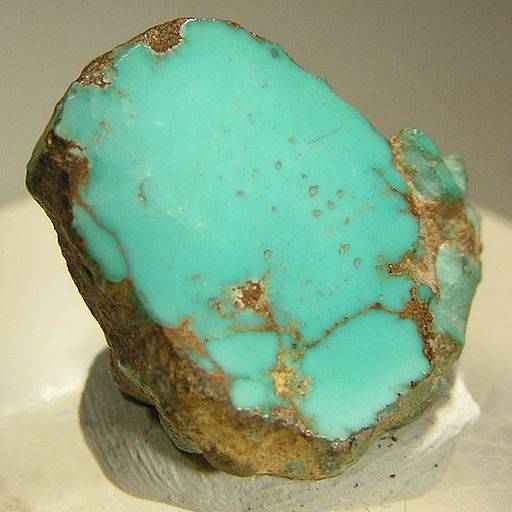
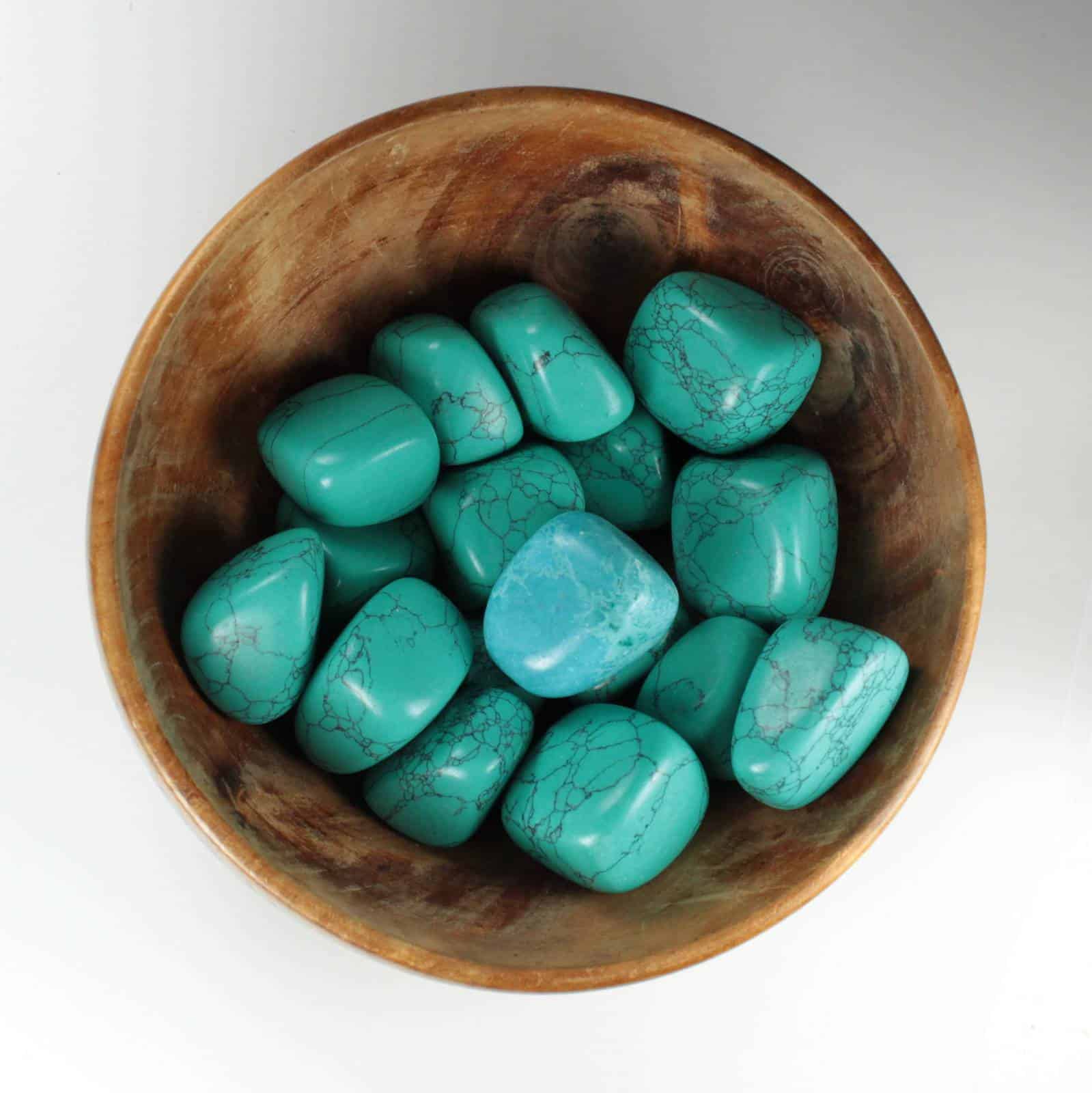
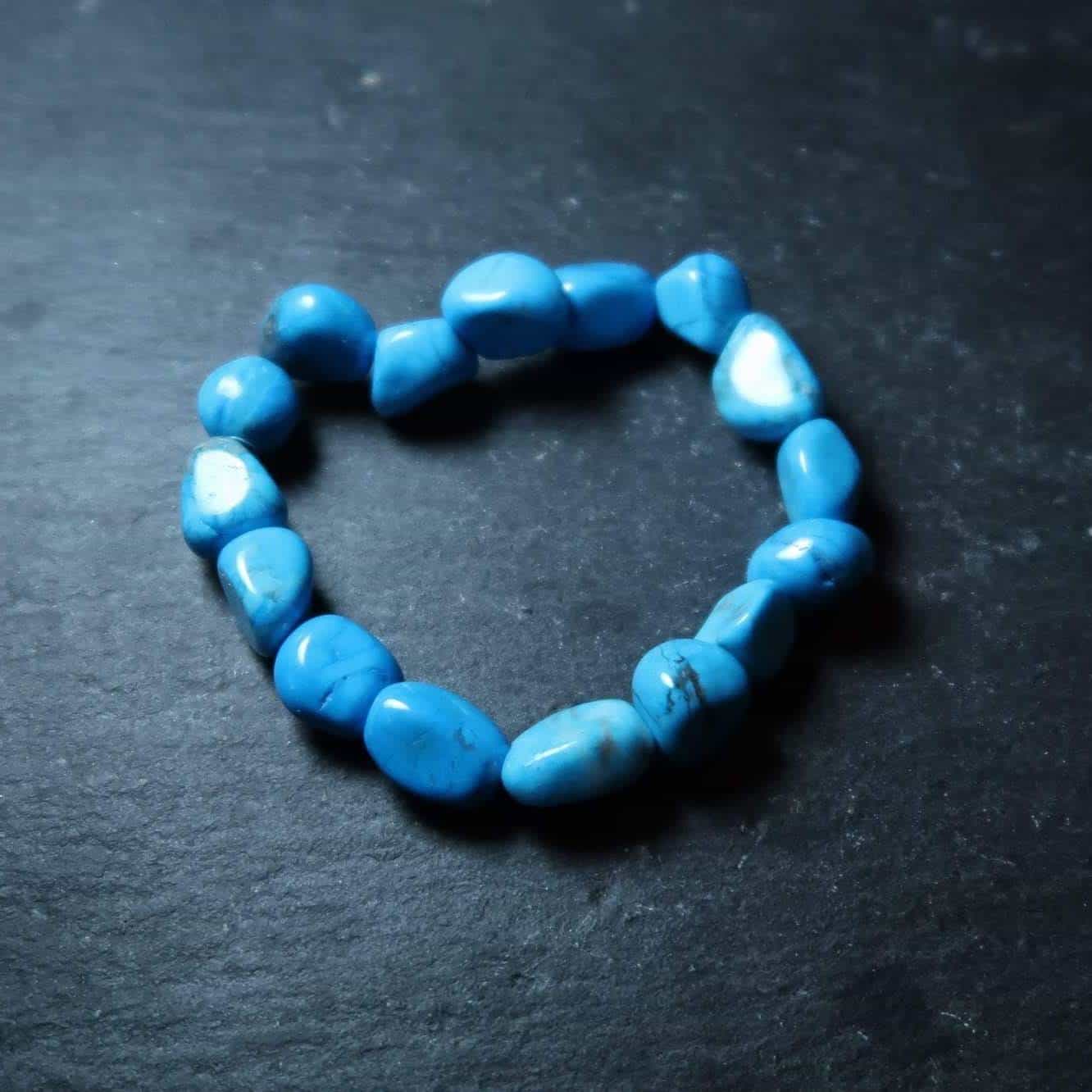
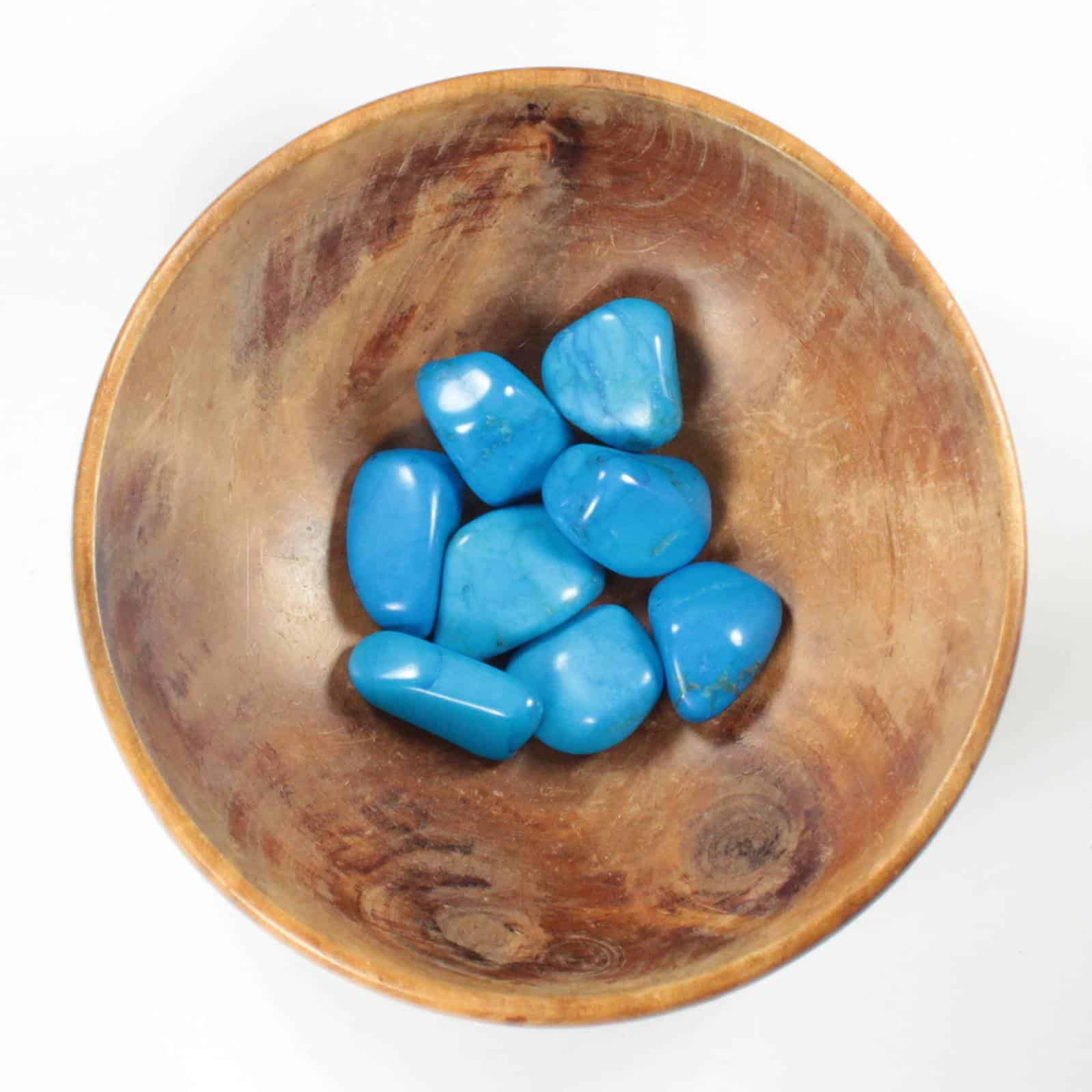

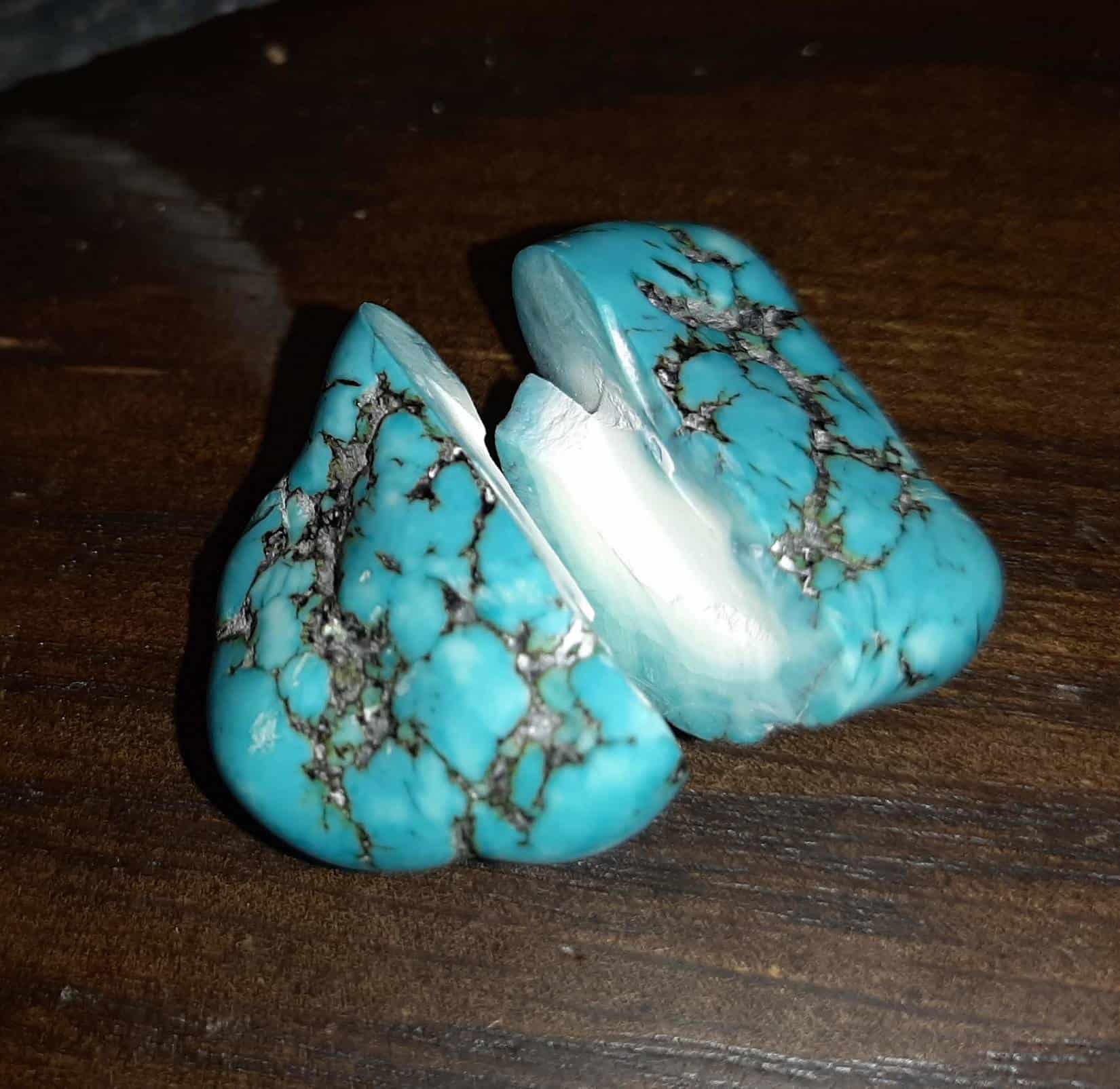
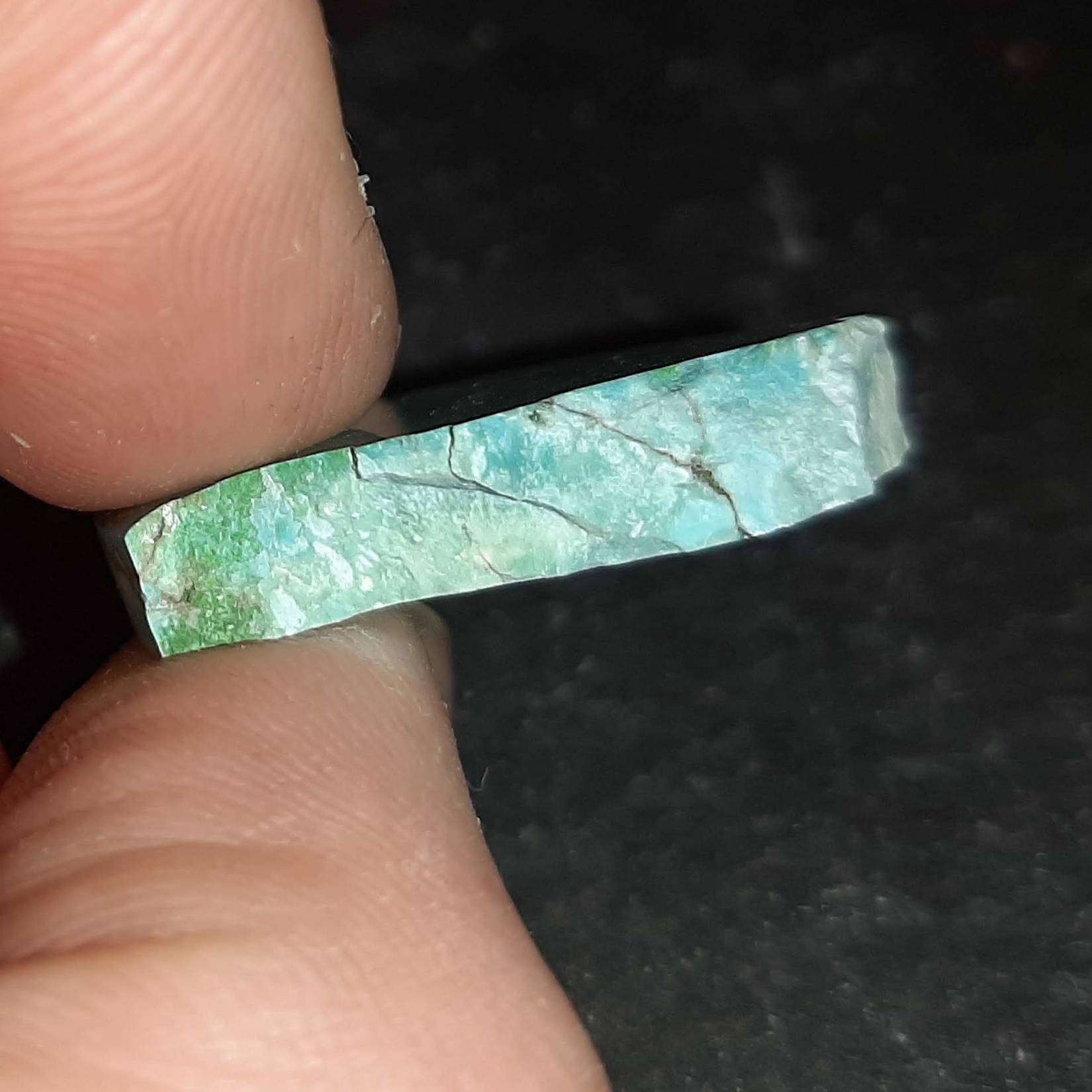
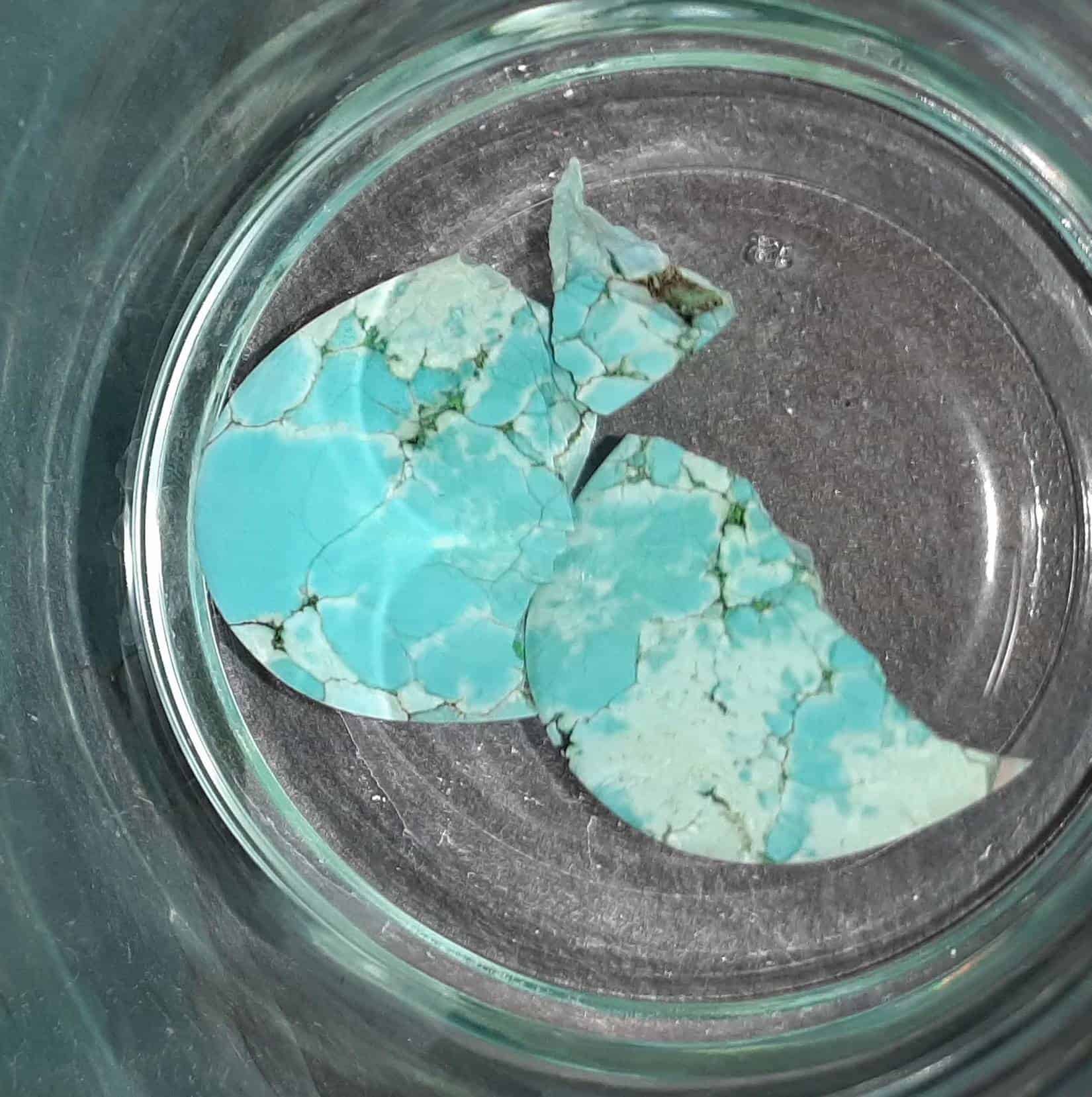
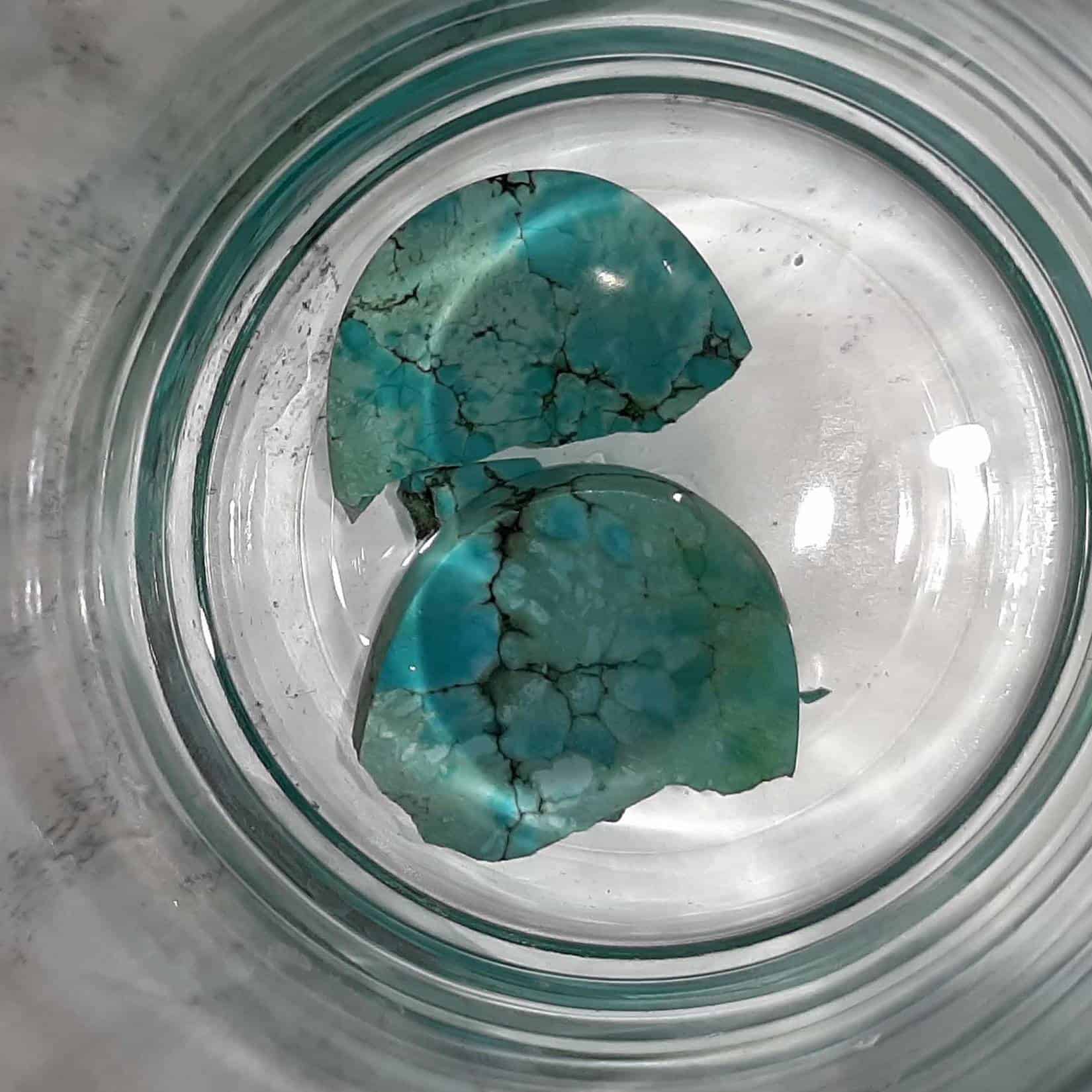
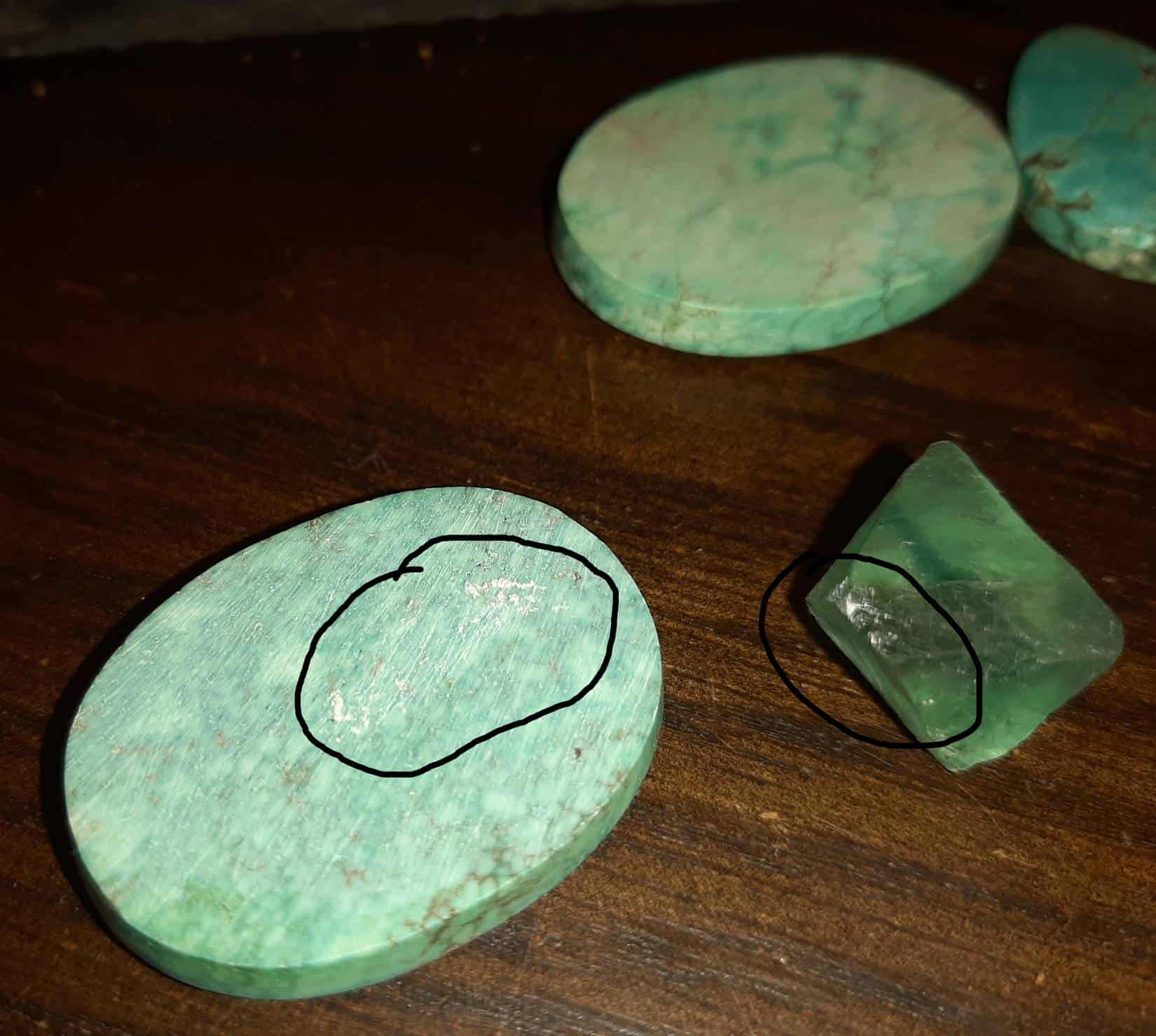
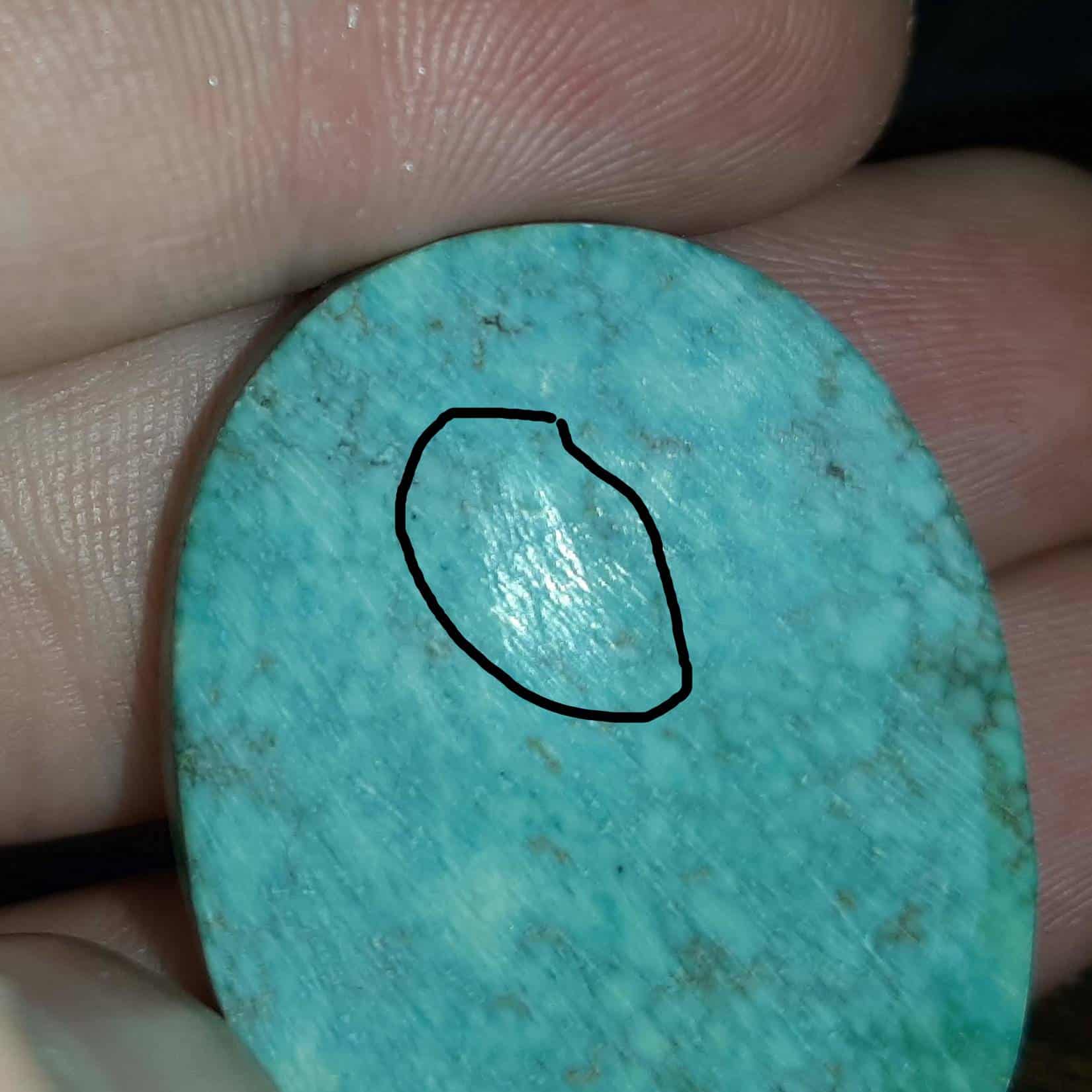
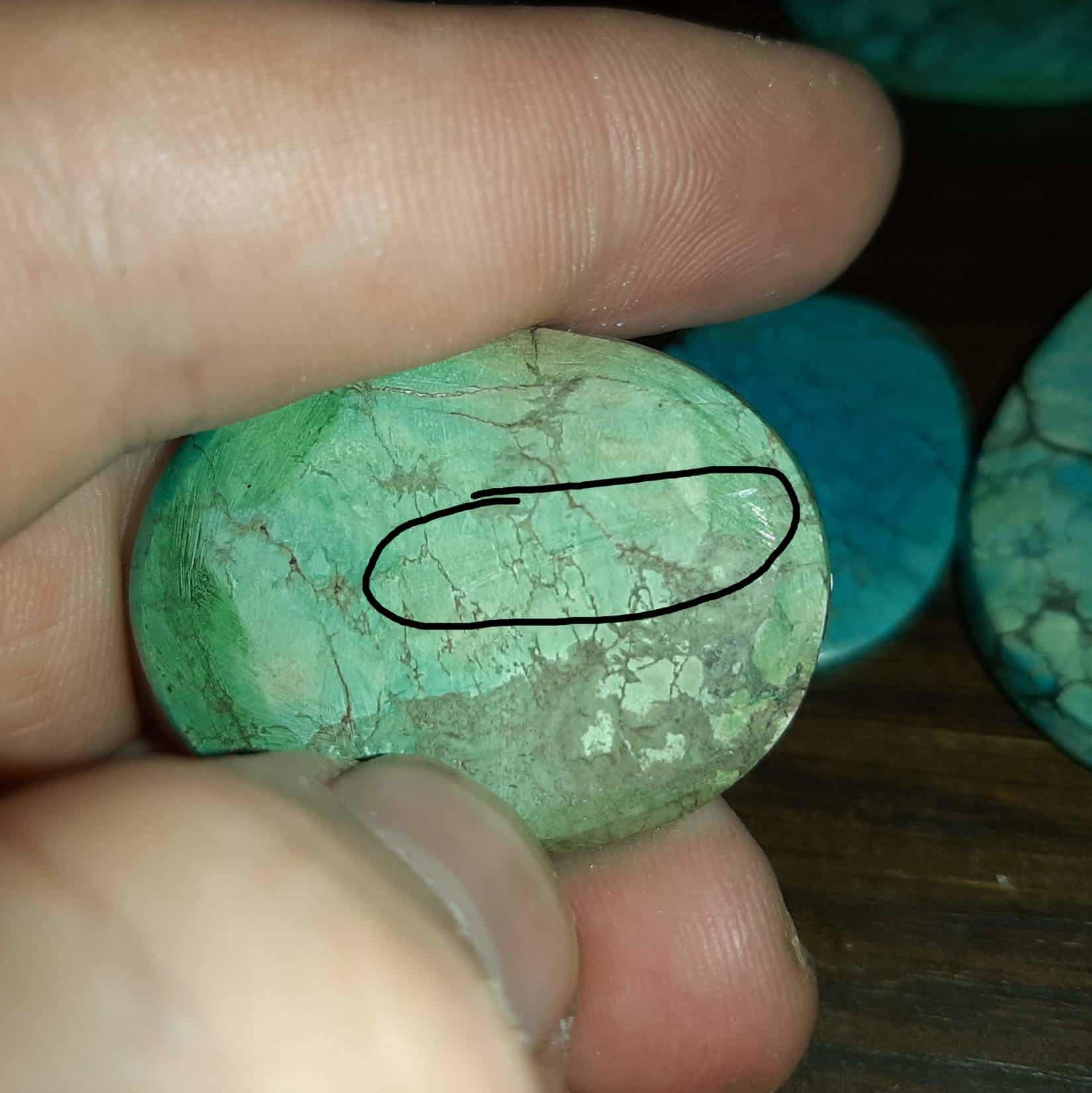
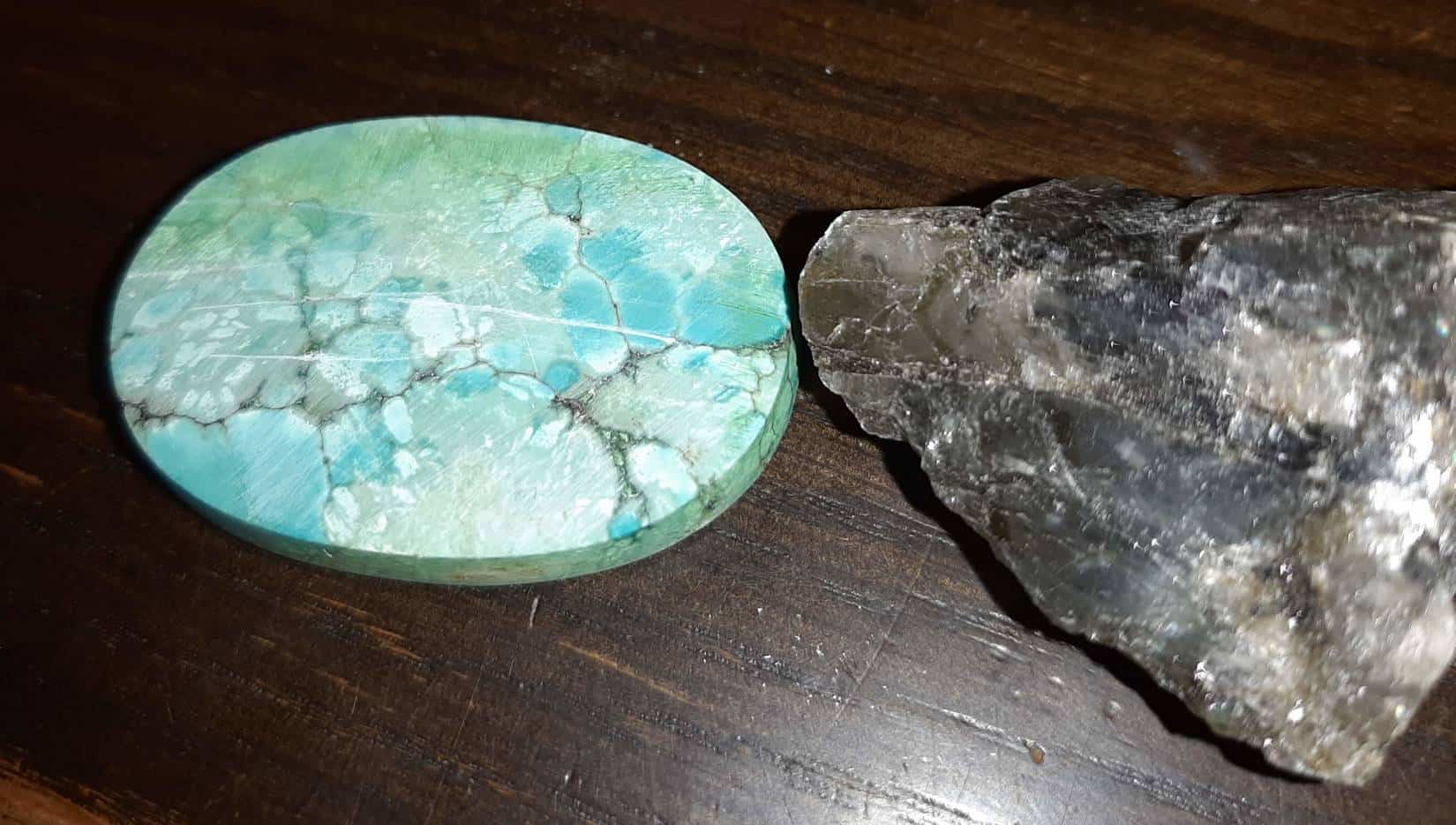
Thanks. Wish there was something more to be done in the store itself
This post is actually being rewritten at the moment – there will be more information. Unfortunately, there isn’t much that you can do that isn’t destructive.
I have quite a few pieces of turquoise jewelry. I rubbed with q-tip soaked in acetone. No color came off. I know some are fake. Only paid $1.00 for a ring. ?
I have terquoise which colour is blue and with some pyrite inclusions on surface Is it reall
@ shahzad that sound more like lapis lazuli than turquoise.
Soak it overnight. Just rubbing it with a q-tip most times won’t affect the dye.
It most likely is, as pyrite is a common inclusion in turquoise.
I’m holding a fake turquoise beads sold as real.13 beads for $ 8. Acetone doesn’t take out color but it is very light, warm to touch & needle able to make a scratch mark. It looks like a duck, walks like a duck, it is a…
I have a apiece of shagri turquoise stone its colour is blue and it seems to metal mixed stone luster of metal seems on some parts of stone tell me it is real or fake
I bought an “OLD” chinese set of bead tootsie roll barrel shaped turquiose necklace. I havent received it yet. Question, how old should these beads be to be authentic genuine turquiose.??
Thank you so very much
Can I send you 1 tootsie roll barrel shaped piece of ” old
Imported turquiose” to see if they’re genuine authentic ??
I bought a string of round 5mm Turquoise beads advertised “natural” and “genuine”. They are a Tiffany blue color. I trust the seller but one split open and it’s white on the inside. Does that mean it is dyed Howlite?
I purchased a string of 5mm round turquoise beads that were marked “natural” and “genuine”. One split when I was stringing them has a white center. Is it reasonable to conclude that these are actually dyed howlite?
I would say that was a reasonable assumption, yes – Howlite, Magnesite or some other fake.
Once you buy REAL turquoise from a dealer or source, and all indications and investigation on your part strengthens the claim of “Real”… Stay with that dealer in the future. If you purchase regularly from them, a familiarity and resulting trust between the two of you can, and usually develops. I started buying from an established merchant several yrs ago who has been in the turquoise business for forty years. I’ve never gotten burned, and I’ve learned enough along the way to hold my own when examining turquoise at other rock shops and shows!
I found a bead in a creek that looks like turquoise to me. I have found several native american artifacts in the vicinity. However, Turquoise is an unusual material this far east in Bullitt Co, KY, not to rule out the possibility it was traded in. The blue is a darker blue with some black webbing. There are some small inclusions of something yellow, and some red shininess in some of the black webbing. I have tried the hot pen and did not notice any melting or odors. I have rubbed acetone with a q tip and no noticeable colors rubbed off, but would like to soak it to further test. Does soaking the bead in acetone harm it if it is real Turquoise?
Hey, I’m also expecting some new beads soon and will be doing all the tests (Moh’s, acetone, etc). Want me to test yours while I’m doing mine? Lemme know 😉
Yes. Real turquoise is not white on the inside
Thank you for your very informative article. I’ve been scammed a few times on EBay. Even had a message from one seller that told me if I remove the negative feedback, they’ll refund me in full! The cheek if it! The ‘turquoise’ was indeed white Howlite underneath. I told them they can keep their money as I will NOT REMIVE OR CHANGE MY NEGATIVE FEEDBACK!! A little advice if you ever do get scammed, the worst thing for a seller is to LEAVE NEGATIVE IN CAPITAL LETTERS AND THEY HATE IT HAHA ?
Hate to hear I’m not the only one scammed on flea bay! They got me too, one lady did refund my money and told me to keep the pendant. I just thanked her & thought to myself…i wouldn’t want to be caught dead wearing this fake p.o.s.! Wish I would’ve warned others now! Sorry we both got beat! ?
ebay will also refund your $, but you must initiate the return thru them & they will require you to make attempts to resolve the issue with the seller. I think it’s like 10 days or 2 weeks to try to work it out directly with the seller. However, you should report this seller because the “item doesn’t match description” & also the whole refund if you retract the bad feedback you gave is very shady & not cool
Ya, I just had the same type of experience with an eBay seller. I told the truth about my dealings with her and she sent 2 profane filled messages! Geeeez! I sell too so I understand but the truth is the truth! I’m not going to lie to make you feel good! I tried communicating with her but had a poor experience. I did report her to eBay since they have policies for this kind of thing. This is my second report and I never heard anything back from the first one! I don’t know about eBay . I’ve acquired several vintage pieces for my collection. Buyer beware! It’s true. I’ve read and researched a lot to be educated in spending my money! Staying with the same dealer or seller is best. Building relationships with sellers and buyers is doing good business. Service and customers should come first! Thanks for everything!
Lisa TurquoisePlus007
good information
I have a 19 gram piece of deep blue turquoise with spider lines that I pulled out of the ground near KINGMAN AZ back in 1978. I have been carrying it for almost 60 years now and am curious if it has any value. It is a deep blue in color. I actually found 3pieces, but have given 2 away to my grandchildren.
Just want to say, that as a beading/jewelry hobbyist–many stones are sold to me as “genuine” and “natural”, and I don’t have tools or methods to test those. I understand that finding a regular, trustworthy, vendor is best–but we get most of our stock at gem and beading trade shows.
So, the person selling a piece as “genuine” may have been bamboozled too.
I bought two necklaces and a string of “turquoise” beads from an ebay seller starting with the name ling……I took them to a gemologist/jeweler who said they were howlite. Out of almost 270$ they refunded me $25 and said enough of the going back and forth and she would just give me one of the strands. The return ended as I couldn’t get a return postage printed. Now she has me blocked on ebay.
If you paid by Paypal or by credit card I would look at issuing a chargeback, although it depends on how that works in your country. Very unfair.
You sound 100% mentally stable; can’t imagine why a person would block you
1) if a price is too good to be true; it’s fake
2) “Ling” is synonymous with a Chinese wholesale seller= fake.
I have an e-commerce jewelry supply store. I can tell you with 100% certainty that the gold and “sterling silver” findings being sold for “too good to be true” pricing is fake Chinese crap stamped as the real thing….
Point being; there is typically a current market price, anything priced significantly below that market price needs to be questioned
This comment is a bit late but if it ever happens again;
*contact eBay (or)
*contact PayPal
If the above fails….
*file a chargeback with your CC company
I am sorry but feel as an eBay seller this needs to be clarified. In this situation all the buyer had to do was to let eBay know about the problem. In a drop down menu to contact the seller request a refund and state the reason. If the seller disagrees or doesn’t respond the buyer can open a case against the seller and eBay will step in, if not resolved in a short period the customer may be refunded by eBay if the listing was false or inappropriate. I have had issues with receiving the wrong items or colors from sellers in China and eBay stepped in and I was refunded. Ebay policies are pretty standard but as stated if the price seems too good to be true be cautious about purchasing that item.
Comment *I would think eBay would step in and help you. eBay would definitely check out the sellers store to make sure they aren’t selling all fake.
Good luck,
Unfortunately eBay doesn’t know enough to tell if items are fake.
“How do I tell?
Certain fake pieces can be identified quite easily by sight or weight – some can not.
One simple test involves heating a pin and placing it on the surface of the stone – a burning plastic smell will indicate that the piece has been treated, or is an imitation.
Another test involves soaking the piece in a strong solvent, such as Acetone overnight. It is possible that some dye will leach out into the solvent, giving you a solid indicator that the piece is either fake or dyed.
A good test is to check out the lines on the Turquoise – on genuine Turquoise and on dyed Howlite, these lines will be sunk into the stone itself. On some fake pieces, they are painted or dyed on and cannot be felt with a fingernail.
Destructive testing techniques.
One simple test that can be done on loose pieces of Turquoise that you own is… well, break it.
In these photographs, you can see two specimens. One is synthetic Turquoise, sold as Turqurenite. One is genuine Turquoise, which I broke for this article.
The synthetic Turqurenite nugget has a large white void in the middle – which shows us that it has been dyed, and that the dye has not penetrated all the way through. This piece is likely Magnesite, from the shape and markings.
The genuine piece has colour all the way through. This won’t always be the case. A constant, steady blue colour can be a sign of fake Turquoise – although some can be genuine.
Most genuine Turquoise specimens will have various shades of blue, white, and even green. The other photos show the specimen soaking in 99% Acetone, which can cause dyes to leach out. No dye had left this piece in 24 hours.”
WHY won’t you ………You wrote “Having the piece in your hands is by far the best way to tell, however, I’m now going to run you through a few simple ways to identify whether a piece is fake or not.”
It is just a few SIMPLE ways???
What are they?????Please
Literally at the bottom of the article…
I have two turquoise bracelets that I’ve had for over 60 years. How can I tell if they are real or not? This is the first time I’ve written to you I’ve never done it before.
Comment * honey if it has the matrix or mother rock it’s real. Or it could be howlite which is a naturally white stone which is also beautiful but why dye it. It wouldn’t be so hard to take it to a jeweler they can probably look at it for free and it’s nice to buy something small.